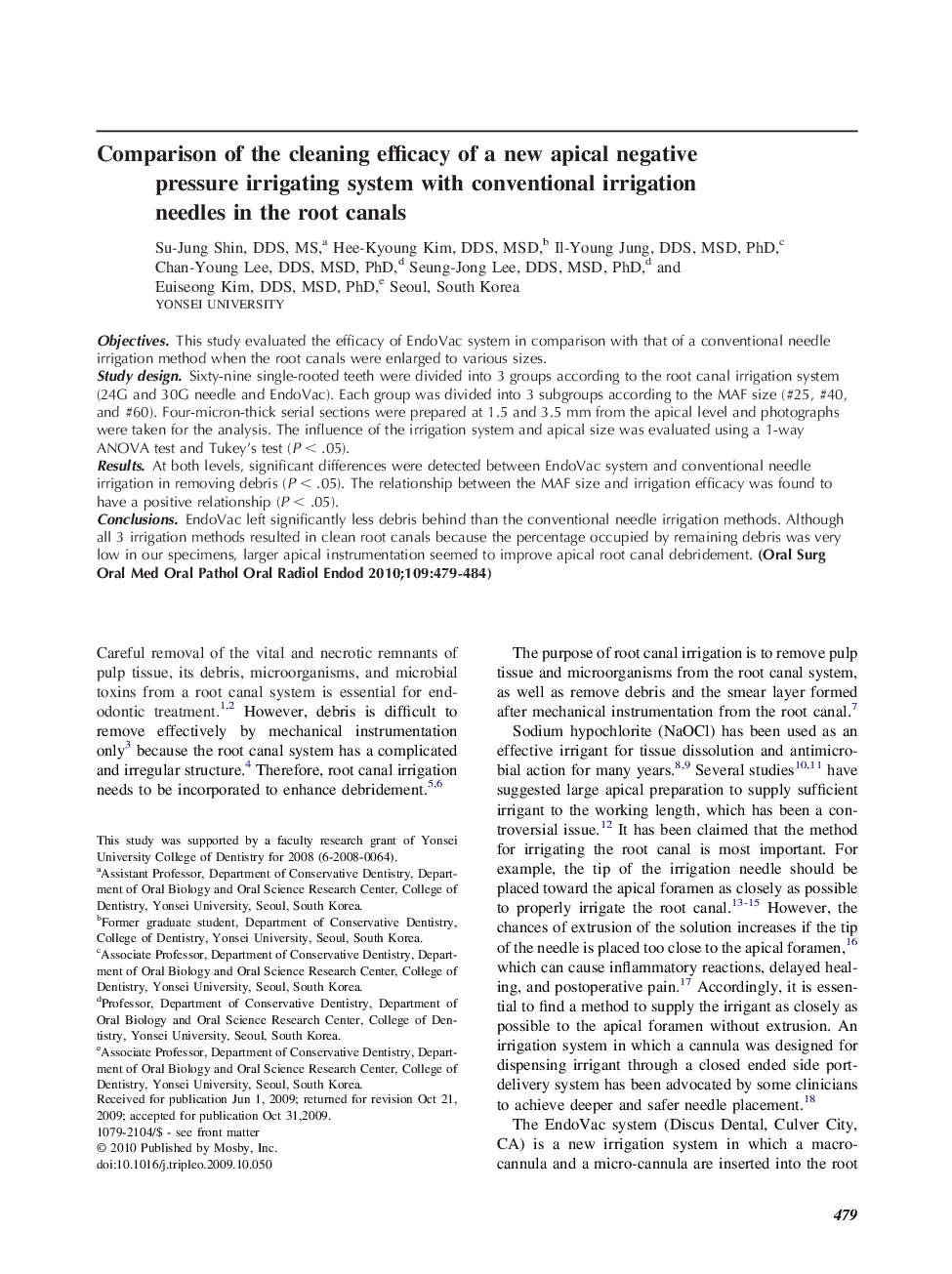| Article ID | Journal | Published Year | Pages | File Type |
|---|---|---|---|---|
| 3167705 | Oral Surgery, Oral Medicine, Oral Pathology, Oral Radiology, and Endodontology | 2010 | 6 Pages |
ObjectivesThis study evaluated the efficacy of EndoVac system in comparison with that of a conventional needle irrigation method when the root canals were enlarged to various sizes.Study designSixty-nine single-rooted teeth were divided into 3 groups according to the root canal irrigation system (24G and 30G needle and EndoVac). Each group was divided into 3 subgroups according to the MAF size (#25, #40, and #60). Four-micron-thick serial sections were prepared at 1.5 and 3.5 mm from the apical level and photographs were taken for the analysis. The influence of the irrigation system and apical size was evaluated using a 1-way ANOVA test and Tukey's test (P < .05).ResultsAt both levels, significant differences were detected between EndoVac system and conventional needle irrigation in removing debris (P < .05). The relationship between the MAF size and irrigation efficacy was found to have a positive relationship (P < .05).ConclusionsEndoVac left significantly less debris behind than the conventional needle irrigation methods. Although all 3 irrigation methods resulted in clean root canals because the percentage occupied by remaining debris was very low in our specimens, larger apical instrumentation seemed to improve apical root canal debridement.
